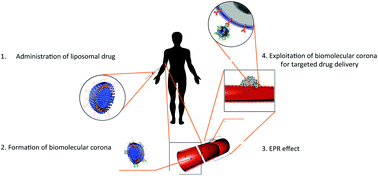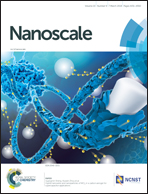Clinically approved liposomal nanomedicines: lessons learned from the biomolecular corona
Abstract
Nowadays, liposomes are the most successful drug delivery systems with a dozen drug products available in the clinic. Grafting poly-(ethylene glycol) (PEG) onto the liposome surface prevents protein binding thus prolonging blood circulation, while synthetic modification of the terminal PEG molecule with ligands (e.g. monoclonal antibodies and peptides) should promote selective accumulation in the tumor region with respect to healthy tissues. However, despite big efforts, advances have not outgrown the development stage and just a few targeted liposomal drugs are commercially available. The latest studies have clarified that following exposure to physiological environments liposomes are covered by a biomolecular corona (BC). Main factors shaping the BC are the liposomes’ physicochemical properties (i.e. size, surface charge and lipid composition), the biological fluid (e.g. plasma of healthy volunteers vs. plasma of cancer patients) and environmental factors (e.g. temperature). Combining the most recent evidence reported in the literature, herein we suggest that the liposome–BC could act as a personalized “endogenous trigger” affecting off-target interactions and controlling the indication for disease of clinically approved formulations. In this Opinion paper, we suggest that a better understanding of the liposome–BC together with improvements in mapping corona proteins will open the fascinating possibility to manipulate the BC by liposome design. This is not an easy task, but it could represent a turning point in the development of novel liposome-based targeting strategies for personalized nanomedicines.



 Please wait while we load your content...
Please wait while we load your content...